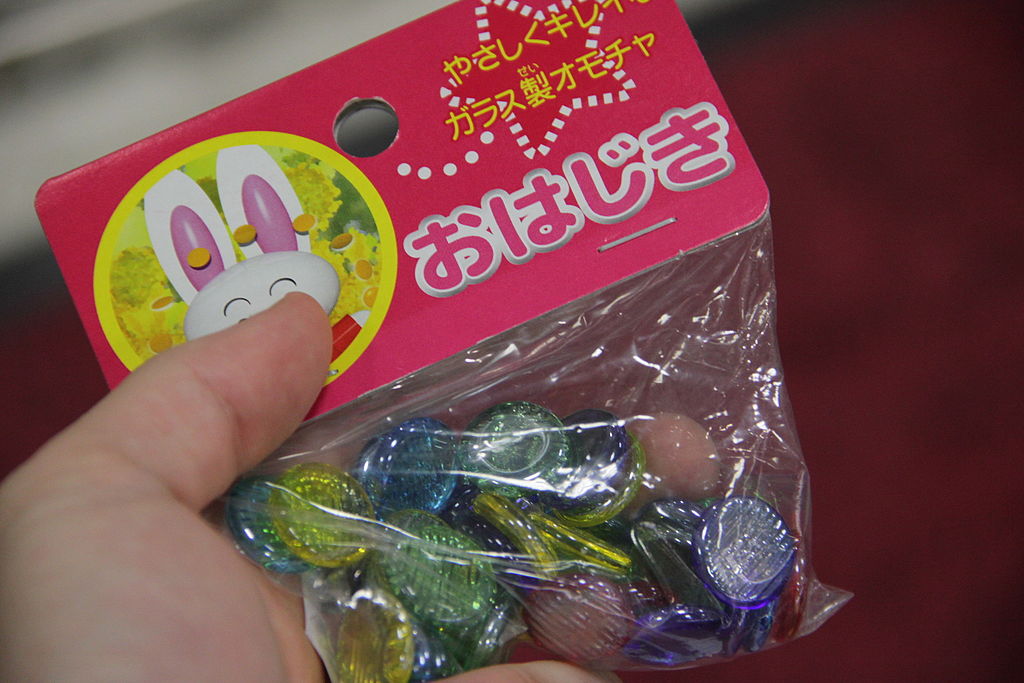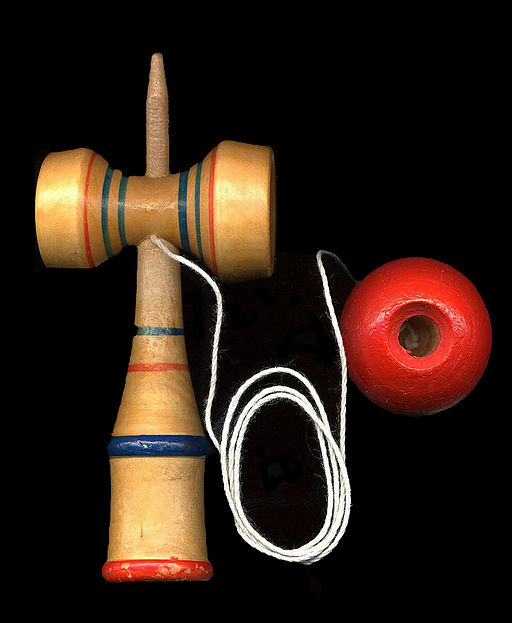The gaming culture of Japan is quite unique compared to most other countries around the world. Not only are they known for being home to some of the best video game companies such as Sony and Nintendo, but they also have a wide array of traditional games too.
Why Do the Japanese Love Games?
Japan’s reputation for being a gamer’s haven has only been a recent phenomenon. Much like other countries all over the world during the past millennium, Japan’s traditional games are simply a part of its culture, stemming from the innate nature of humans to enjoy friendly competitions and entertaining diversions.
Now, however, some games have been stepped up many notches, and the interest and addiction to these games are evident. A possible reason much of the population of Japan has such a penchant for playing and producing all kinds of games is that of their intense work ethic.
Japan’s outlook on work is that one should have one's complete and utter dedication to it, leading to many overworked and exhausted employees. So, you will see many people from different backgrounds and professions come together in arcades to outdo each other’s scores or buy the latest console just to de-stress from the tension that comes from their job.
Supply and Demand
Where there’s demand, supply follows – if it can. Japan has a very high concentration of people who enjoy playing games. Because of this huge demand, traditional and digital/electronic games are constantly being innovated and improved. Japan may now be known for producing some of the world’s most anticipated consoles (such as the Nintendo Switch) or producing triple-A classified video game titles, but it’s also good to look back at the games that shaped the nation of Japan to become what it is now.
Reaching Back to Ancient Times
Though not fully and precisely documented, each of Japan’s traditional games has its own story and timeframe to which it belongs to. There is evidence to suggest that some games started as early as the 7th century, while many other games were popular during the Edo period. There are over 40 traditional Japanese games which belong to different categories.
Traditional Japanese Games
So far, there are 6 categories listed when it comes to traditional Japanese games. There are mechanical games, children’s games, women’s games, board games, card games, tile games, dice games, and word games. The category with the most amount of games is Children’s games. Note that some games may share categories with others, as although it may be a children’s game, it also may be one more likely to be played by girls – like a game called “Ohajiki”.
.jpg)
All About the Traditional Japanese Game, Ohajiki
Written in Japanese as “おはじき”, Ohajiki is played with flattened ceramic or glass pieces (though some use plastic today) – as though a spherical marble were flattened. The pieces come in different colors, but relatively in the same round, thick coin shape and a size of about 1 to 1.5 centimeter’s diameter. Some sets are perfectly uniform, some aren’t. Ohajiki pieces usually have a crisscross or linear etch on both sides, possibly to make it easier to grip with one’s fingers while playing.
The History of Ohajiki
The game “Ohajiki” comes from the Japanese word “hajiku”, which means “flicking”. While it is a game for all children, it is more known as a game played by girls. The word “Ohajiki” itself refers to the special marble-like pieces that are used to play the game.
It is suggested that the game has been played as early as the Nara period, which began as early as the year 710 and ended 794. The is said to have originally come from China. The Nara period was indeed a portion of Japanese history where Japan benefitted significantly from Chinese influence, much of which was brought in by traveling monks. Aside from games, other aspects of Japanese culture were shared by China, such as language, arts, religion, and more.
Easy Pieces
While the stones used to play today Ohajiki look well-polished and shiny, Ohajiki was first played using pebbles picked up from the ground. The game was initially referred to during earlier times as “ishi-hajiki”, which means “stone flicking”. Though the game can be played virtually anywhere because of its simplicity, it was curiously only played by those of the noble class, especially Imperial court.

The game faded into obscurity much after the Nara period, however during the Edo period (which lasted from 1603 until 1868) that the game re-emerged, and its popularity soared. At this point, female children of different classes (not just those of nobility this time) most often played the game. By the time the Meiji restoration had taken place and was already fast approaching the Taisho period (1912 – 1926), special Ohajiki pieces emerged that were made of glass.
How to Play Ohajiki
There are many variants to play Ohajiki; you can play it as a single player, or with many players. One popular variant is to first scatter the Ohajiki on a flat surface. Flick one piece to try to hit another singular piece. If successful, that creates a space. You should then be able to flick another piece in between that space created without touching any other piece. If successful, you acquire the piece you flicked in between the first to Ohajiki pieces that were flicked to each other. You automatically lose once you are not successful in flicking a piece in between the first two Ohajiki pieces that made contact. You also lose if any Ohajiki piece you flick hits more than one piece. In the end, whoever has the most pieces, wins.
You can either take turns doing this, or you can have separate sets, competing by comparing sets. Others play a simpler version of the game, where you draw an imaginary line between your Ohajiki piece and the other Ohajiki piece you plan to knock. You then attempt to flick the Ohajiki piece onto another piece, which you keep both pieces (the hitting piece and the piece that was hit) if you’re successful at hitting. You take turns continuing to do this until you arrive at the winner, who has the most Ohajiki pieces.
Another way to play Ohajiki is like a game of bingo but in reverse. You will need sheets of paper that have prints on them, usually random objects. Each print has a piece of Ohajiki on top of it. As the host, teacher, or instructor picks out an image and announces it, you must remove the Ohajiki piece from the image. If you’re the first to remove all the pieces of Ohajiki from your pictures, then you win the game – unlike in Bingo, where if you’re the first to have all the pieces in, you win.
Where to Find Special Marbles Used for Playing Ohajiki
Ohajiki is cheap and very easy to find. If you want to purchase them online, you can find them on Amazon in the U.S. and in Japan. You can also find them on eBay and Etsy. If the term “ohajiki pieces” doesn’t give you many options after searching, you can try “flat glass marbles”, and you’ll end up with relatively the same product that can still be used for playing Ohajiki.
You can get them for around 8 to 10 dollars for a bag of 100 pieces, made from the same material as marbles are. Others go for cheaper, (like plastic) while antique Ohajiki pieces can cost much more.

Ohajiki Sea Glass – A New Fashion Statement
It is possible to fashion Ohajiki pieces from sea glass. Sea glass refers to actual glass whose edges had been eroded over time, after being in the sea for so long. This turns the glass into an uneven, yet smooth bead. They are often flat, and appear in different colors, and can come from anything such as shards from a shipwreck, or from an old broken bottle.
Many of these sea glass pieces resemble Ohajiki pieces and can be used for them. However, because of all the new forms of modern entertainment people have nowadays, traditional games are not played as often, and the apparatuses used to play these games are looked at as objects of nostalgia. Thus, some turn the sea glass pieces used to play Ohajiki as fashion items. This has proven to be a popular hit online.
Examples of Ohajiki Jewelry
Ohajiki pieces are often fashioned into bracelets, pendants, and rings. Some even turn them into brooches, while smaller pieces can be used as an accent in hair clips. They come in different colors, most popularly blue, followed by white, green, purple, and yellow. Some wear the entire matching set (necklace, bracelet, and ring) as though to truly represent the pieces of the game itself. Ohajiki jewelry is a great piece to wear during any time of the year, whether it’s on a summery day in June, July or August, or a cool winter’s day on December, January, or February.
Take note, though - every piece of jewelry, even if it uses Ohajiki, is different. Some may cost more because of how precious the Ohajiki piece is (it may have been proven to come from the Edo or Taisho period), while others may be cheaper because the stone was fashioned to mimic an Ohajiki piece and was molded from plastic. Either way, it’s always good to make sure the originality and genuineness of the item.
Where to Buy Jewelry Made with Ohajiki
For hand-made jewelry and personalized Ohajiki crafts, a great place to start looking is Etsy. You can also look at Kai Candy Jewelry, which has many cool-colored Ohajiki pendants and bracelets that are tastefully done and would make a good accent to a dress or denim. There are many other independent websites that create jewelry and have categories focusing just on Ohajiki jewelry.

What Are Other Examples of Traditional Japanese Games?
Aside from Ohajiki, there are many other traditional Japanese games that are still popular today. Some examples include Hantesuki, which is somewhat like the Japanese version of badminton (and the paddle is differently shaped), Kendama, where you try to catch a wooden ball with a hammer-like handle, fashioned with scoops on the side, and Daruma Otoshi – otherwise known as “The Falling Buddha”, which is slightly similar to Jengga in the sense that you have to slowly pick out the bottom piece with a small hammer while making sure the daruma on top doesn’t fall off.
Teaching Kids Traditional Games
A way to introduce children to a part of history that may be considered more fun is to incorporate a traditional game into their routine. It can be the “game of the month”. So, kids can get Kendamas for the months of September and October, but by November, they’ll learn how to master Ohajiki. During spring months of March, April, and May, another game can be introduced. This way, kids get to learn about their own or other cultures and enjoy doing so, while developing their motor skills, as well as thinking skills.
